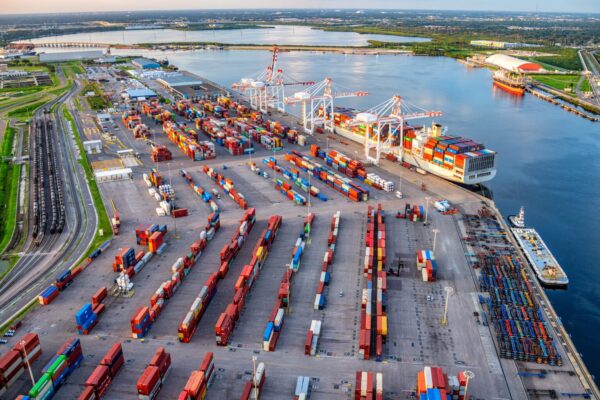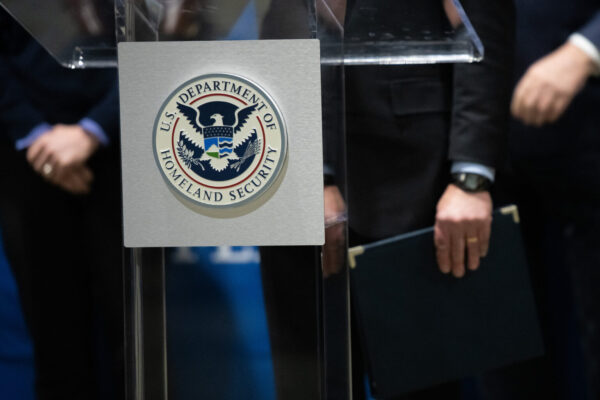U.S. ports are vital to the flow of imports and exports; however, the entire maritime transportation system’s cybersecurity is exceedingly vulnerable. The August 2024 ransomware attack at the Port of Seattle resulted in significant cargo delays and a data breach of 90,000 individuals. Such a wide-scale incursion could have resulted in a longer loss of communications, further security breaches, and accidents with fatalities.
Amid rising national security concerns and urgent economic challenges posed by malicious cyber-enabled activities, the Trump administration faces an increasingly porous maritime border. In collaboration with Congress, state and local leaders, and the private sector, the administration must properly support and modernize the U.S. Coast Guard, invest in advanced technologies and security measures, better equip state, local, tribal and territorial (SLTT) governments, and take action to revitalize American shipping.
Partial Progress and Shortcomings
The Biden administration took some steps to bolster maritime cybersecurity. The Coast Guard gained authority to lead on cybersecurity threats and directed the Commandant to develop minimum cybersecurity standards for the system.
President Biden’s initial pledge of over $20 billion for U.S. port infrastructure improvements over five years was an important signal for public-private partnerships. But the funds never came to fruition.
The Coast Guard’s track record as the sector risk management agency has fallen short. In a July 2024 audit report, the Department of Homeland Security’s Inspector General found that the organization lacked sufficient cyber expertise, capacity, and the necessary credibility to partner with private-sector port operators.
The Government Accountability Office’s February 2025 Report also concluded that the Coast Guard lacked meaningful visibility into the true scale of cybersecurity incidents in maritime transportation systems, and the necessary personnel to respond effectively.
Chinese Critical Infrastructure Threats
Under this backdrop, the Coast Guard’s cyber mission seemed destined to fail. With emboldened adversaries, such as China, Iran, Russia, and North Korea, the Trump Administration must chart a new course that steers our maritime cybersecurity away from half-measures and wishful thinking.
But time is ticking. Policymakers have long received evidence of Chinese involvement in cyberattacks on U.S. critical infrastructure, but news leaked about Chinese officials’ acknowledgement that their Volt Typhoon attacks were meant to reduce American resolve from intervening in a potential China-Taiwan conflict.
This damning admission is worse in the port context, where weakening competition, tech debt, and overreliance on 80 percent of the ports’ Chinese cranes and its underlying software have compromised the maritime transportation system. Despite Congressional reports and hearings, over 200 Chinese-made cranes still operate in American ports. Congress should pass the bipartisan Port Crane Security and Inspection Act of 2025 to take critical steps to reduce foreign crane reliance and decrease supply chain risk.
Transforming a Cyber-Ready Coast Guard
To move beyond managing maritime decline, the Trump administration must prioritize the Coast Guard’s cyber posture and capabilities. Establishing minimum requirements, training, and a cybersecurity plan are table stakes. Adequate resilience requires more expertise and comprehensive digital tools. Congress and the administration should increase cyber-specific Coast Guard personnel and automated digital tools to gain visibility across thousands of miles of coastline.
These recommendations should be priorities in the Coast Guard’s Force Design 2028 effort. Depending on Force Design 2028’s conclusions, Congress should also strongly consider a prospective Secretary of the Coast Guard to signal its co-equal importance with the other Armed Forces.
An All-of-the-Above Emerging Technology Strategy
Beyond the Coast Guard’s cyber remit, the administration’s call for a Golden Age of American Innovation is timely. The White House’s top technologists should work with the AI and emerging technology community to apply their expertise toward securing America’s waters with the same fervor as the Southern Border. AI tools and the prospects for maritime blockchain technology deployment could improve security. Necessary software and operational technology systems upgrades are also essential to modernize dilapidated ports.
Strengthening SLTT Partnerships
But technology alone is not enough to combat cyber threats. State, local, tribal and territorial (SLTT) partnerships are even more vital as DOGE efforts have fallen short and imperiled regional readiness. Prospective federal workforce reductions and funding cuts to the Cybersecurity and Infrastructure Security Agency and the Federal Emergency Management Agency (FEMA), particularly its State and Local Cybersecurity Grant Program and Port Security Grant Program, would disproportionately weaken SLTT maritime cyber capability. Additional disinvestments to information sharing and analysis centers further degrades coordination and collaboration at a time of heightened threats.
Through President Trump’s Executive Order on Achieving Efficiency through State and Local Preparedness, the administration should work closely with SLTT leaders, industry, and key stakeholders to develop recommendations in its National Resilience Strategy, National Critical Infrastructure Strategy, and National Risk Register. These strategies should include proposed clear metrics, standards, and key performance indicators for government leaders to track.
These recommendations should also prioritize the preservation and enhancement of critical FEMA grant programs and information sharing forums. To reduce barriers and speed up response efforts, DHS should also fast-track security clearances for key SLTT leaders to enable quicker and more effective coordination.
Revitalizing U.S. Shipping Superiority
So how does the United States pay for these cyber and homeland security investments? There must be a healthier U.S. shipping economy to bring in more revenue and prevent cargo carriers from circumventing port fees. Tariffs could have mixed results, but the President’s Executive Order on Restoring America’s Maritime Dominance prioritizes this struggling sector.
The administration should rely on the Coast Guard and Maritime Administration, who have expertise to develop and secure the American maritime industry. In addition to a Maritime Security Trust Fund, which would reinvest these prospective duties and fees into maritime security programs and infrastructure supporting commerce, the administration and Congress should pass the bicameral, bipartisan Cyber PIVOTT Act of 2025 and include scholarships for cyber talent to enter the maritime community.
An Opportunity for Global Leadership
President Trump and Congress have a rare opportunity to reinvigorate U.S. maritime cybersecurity. A Coast Guard reimagination, deeper technology investments, more resilient SLTT communities, and a stronger shipping economy can transform U.S. homeland security and close cyber gaps.
As adversaries deploy more audacious digital attacks on U.S. critical infrastructure, necessary innovations to American maritime transportation systems and interests are essential to reinforcing America’s position as the gold standard.
Jeff Le is Managing Principal at 100 Mile Strategies LLC and a Visiting Fellow at George Mason University’s National Security Institute. From 2015 to 2019, Jeff was Deputy Cabinet Secretary to former California Governor Jerry Brown responsible for the emerging technology, cybersecurity, and homeland security portfolio for the state.
The post Rebuilding Maritime Cybersecurity Resilience: Charting an America First Course to Secure the U.S. Homeland appeared first on CyberScoop.
–
Read More – CyberScoop




